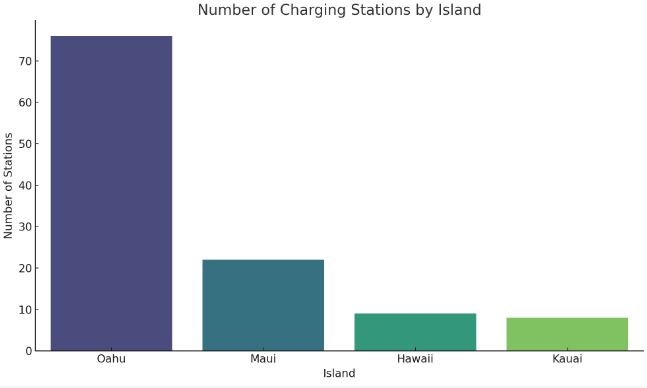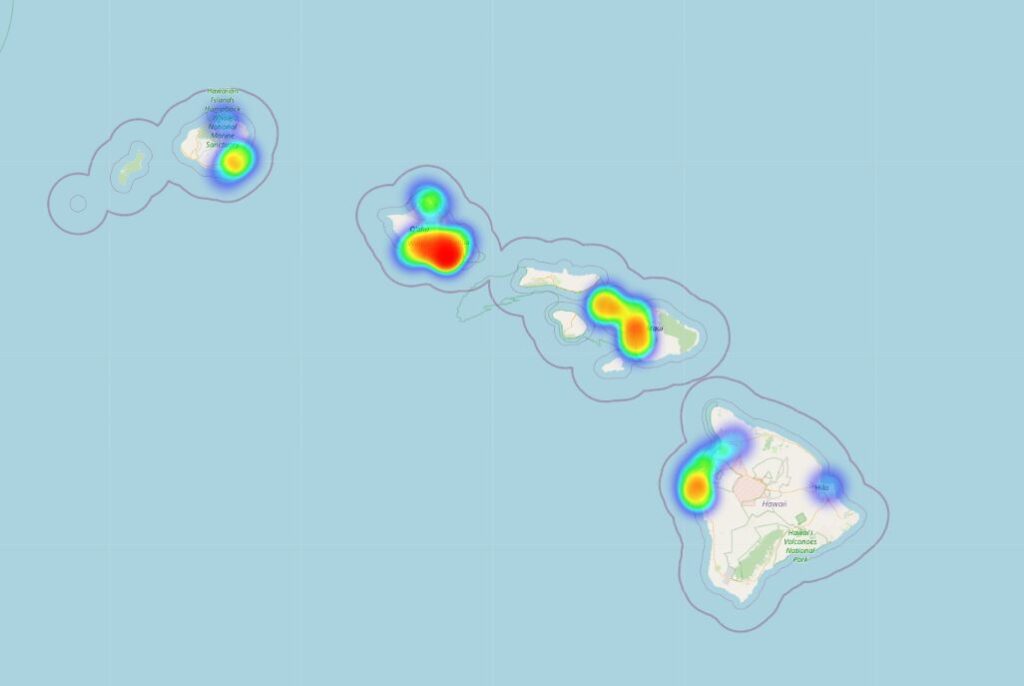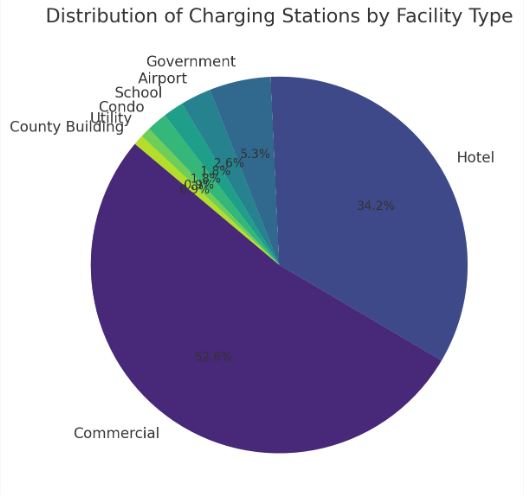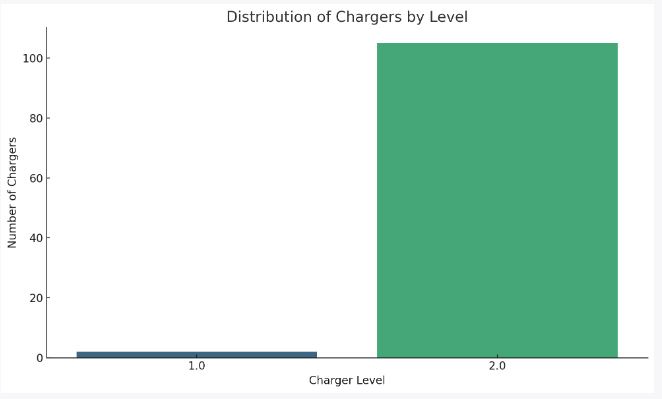As the world pivots towards sustainable transportation, Hawaii is at the forefront with its push for Electric Vehicles (EVs). But how does the charging infrastructure fare beyond the bustling streets of Honolulu? Dive into the analysis below.
At A Glance
Statewide Analysis of EV Charging Stations
As the world shifts towards sustainable transportation, understanding the distribution of Electric Vehicle (EV) charging stations becomes crucial. Hawaii, with its commitment to a greener future, is no exception. Let’s delve into a comprehensive analysis of the EV charging infrastructure across the Hawaiian islands:
- Oahu: With a whopping 76 stations, Oahu leads the charge (pun intended) in EV infrastructure. The island’s capital, Honolulu, being a major urban center, has significantly contributed to this number.
- Maui: The second-largest Hawaiian island isn’t far behind with 22 stations. Given its size and tourist influx, Maui’s progress in this area is commendable.
- Hawaii (Big Island): Despite being the largest island, the Big Island has only 9 stations. This indicates a potential area for growth, especially considering the island’s vast landscapes and attractions spread out over long distances.
- Kauai: The “Garden Isle” has 8 stations. While this number might seem small, it’s essential to consider Kauai’s size and population density in comparison to the other islands.
The disparity in numbers highlights the challenges and opportunities in Hawaii’s push for EV adoption. While Oahu, especially Honolulu, seems well-equipped, there’s a pressing need to bolster the infrastructure on the other islands. This will not only cater to the local residents but also ensure that tourists, a significant driver of Hawaii’s economy, can confidently opt for EV rentals during their stay.

The visual representation above further underscores the need for a balanced distribution of EV charging stations. As Hawaii continues its journey towards sustainability, ensuring equitable access to EV infrastructure across all islands will be pivotal.
The Charging Challenge Beyond Honolulu
While Honolulu, as the capital and largest city of Hawaii, has made significant strides in accommodating electric vehicles (EVs), the scenario changes dramatically once we venture beyond its borders. The broader regions of Oahu and the neighboring islands present a different picture, one that highlights the challenges of EV adoption in less urbanized areas.
The primary concern for many potential EV users is “range anxiety.” This term refers to the apprehension EV drivers feel about running out of battery power before reaching a charging station. And, given the current distribution of charging stations, this anxiety is not unfounded. For Hawaii to truly embrace the electric revolution, it’s imperative to ensure that every part of the island chain, not just its urban hub, is equipped to support this transition.

The heat map above provides a visual representation of the current state of EV charging infrastructure in Hawaii. The concentration of stations in Honolulu is evident, but so is the lack of infrastructure in other parts of the state. Addressing this imbalance is crucial for ensuring that Hawaii’s push towards sustainable transportation benefits all its residents and visitors, regardless of where they choose to travel or reside.
Facility Type & Charging Speed
When considering the adoption of electric vehicles (EVs), the availability and type of charging stations play a pivotal role. In Hawaii, the distribution of these stations reveals a pattern that aligns with the state’s tourism-centric economy and urban development.
Commercial areas, shopping centers, and hotels are the primary hosts of these charging stations. While this makes sense from a business perspective, catering to tourists and shoppers, it poses challenges for local residents. Those living outside these commercial hubs, especially in more remote or rural areas, might find it challenging to access these stations conveniently.

Another crucial aspect to consider is the charging speed. While Level 2 chargers are more prevalent due to their balance of charging speed and infrastructure cost, there’s a noticeable lack of Level 3 chargers. These faster chargers are essential for those traveling longer distances, ensuring quicker charge times and reducing waiting periods, especially for inter-island travelers or those on tight schedules.

For Hawaii to truly champion the EV revolution, it’s essential to address these disparities. A more balanced distribution of charging stations, catering to both residents and tourists, and a mix of Level 2 and Level 3 chargers can ensure that the state’s EV infrastructure meets the needs of all its users.
Hawaii’s vision for a greener future is evident in its push for EVs. However, for this vision to materialize, the charging infrastructure needs a boost. Bridging the gap between Honolulu and the rest of Hawaii is essential to ensure that the transition to EVs is smooth, sustainable, and inclusive of all residents.

Scott Sweeney is the creator of Virtual Hawaii 360. Scott is a professional marketer and a lifelong Hawaii enthusiast. Scott splits time between Oahu and Dayton, Ohio. In addition to his marketing endevours, he is also a published Ukulele musician.
